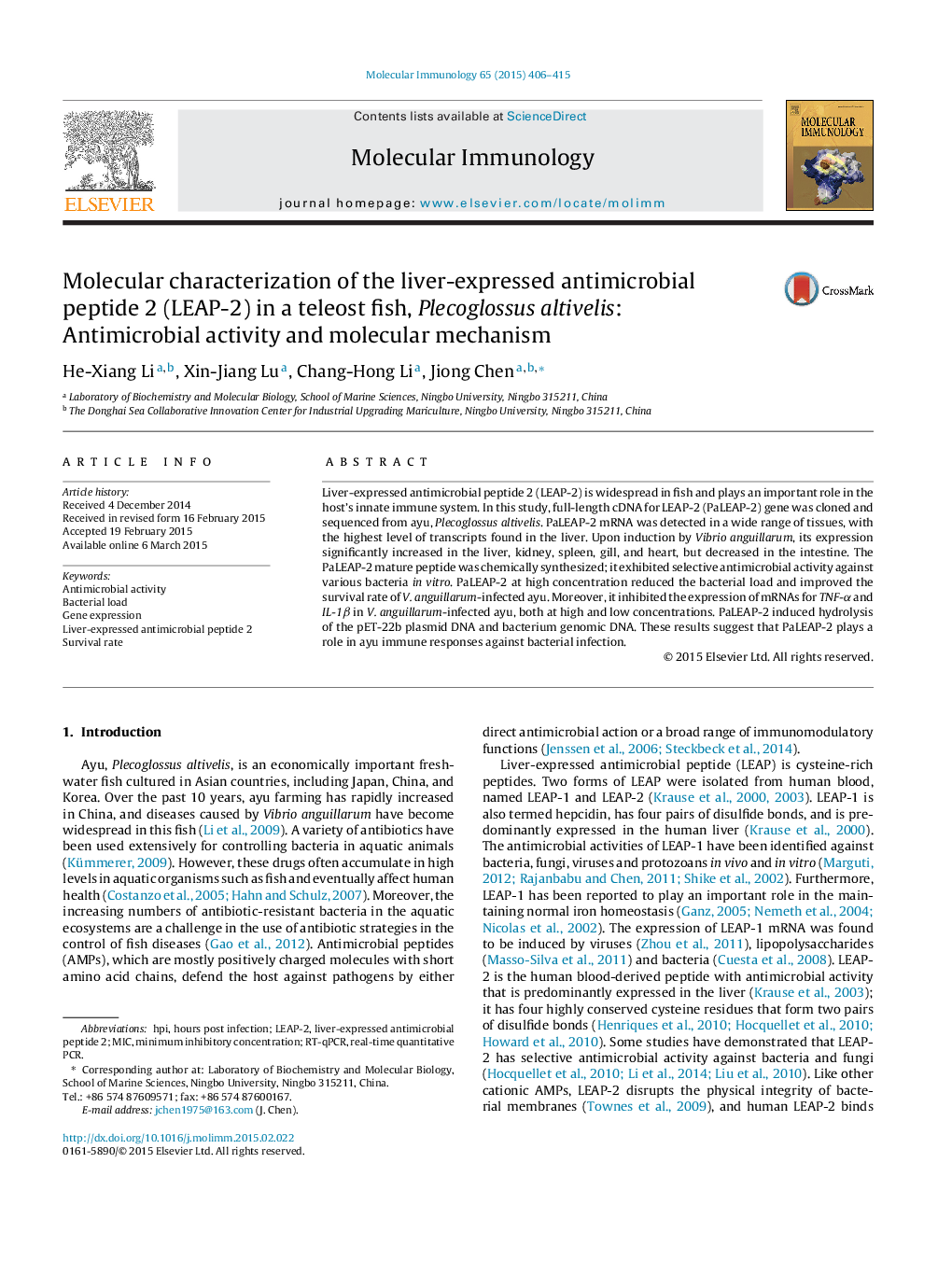| Article ID | Journal | Published Year | Pages | File Type |
|---|---|---|---|---|
| 2830800 | Molecular Immunology | 2015 | 10 Pages |
•We characterized a novel LEAP-2 gene from ayu.•Tissue PaLEAP-2 transcripts were altered upon Vibrio anguillarum infection.•PaLEAP-2 had an selective antimicrobial activity against various bacteria in vitro.•PaLEAP-2 improves the outcome of V. anguillarum-infected ayu.
Liver-expressed antimicrobial peptide 2 (LEAP-2) is widespread in fish and plays an important role in the host's innate immune system. In this study, full-length cDNA for LEAP-2 (PaLEAP-2) gene was cloned and sequenced from ayu, Plecoglossus altivelis. PaLEAP-2 mRNA was detected in a wide range of tissues, with the highest level of transcripts found in the liver. Upon induction by Vibrio anguillarum, its expression significantly increased in the liver, kidney, spleen, gill, and heart, but decreased in the intestine. The PaLEAP-2 mature peptide was chemically synthesized; it exhibited selective antimicrobial activity against various bacteria in vitro. PaLEAP-2 at high concentration reduced the bacterial load and improved the survival rate of V. anguillarum-infected ayu. Moreover, it inhibited the expression of mRNAs for TNF-α and IL-1β in V. anguillarum-infected ayu, both at high and low concentrations. PaLEAP-2 induced hydrolysis of the pET-22b plasmid DNA and bacterium genomic DNA. These results suggest that PaLEAP-2 plays a role in ayu immune responses against bacterial infection.
